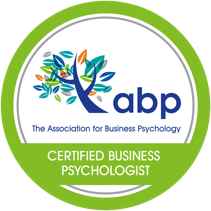By Olivia Graham, Managing Partner, Graham, Tulloch & Associates
An graphological analysis provides an objective assessment.
I’d like to make very clear from the start, that graphology has no connection with the esoteric arts such as astrological chart readings, palm or crystal ball inferences, let alone the results obtained from looking at tea-leaves and chicken entrails! Secondly qualified graphologists are not imbued with special psychic powers.
Like all humanistic sciences graphology depends on research and experimentation – not on intuition or magic. Rather like a jig-saw puzzle, individual signs have no relevance or significance on their own, and it is not until each piece has been positioned correctly that the composite picture emerges. Thus the answer the question I am frequently asked ‘Is graphology a science or an art?’ is in fact both. The science is the analyses of some 350 aspects of handwriting and the art is combining and blending these to produce a balanced portrait of the personality.
Each writing is as unique as a fingerprint and just as no two individuals are identical, each writing is clearly and absolutely defined. Writing, being ruled by the natural laws of expression, accords with all other means of expression; movement, gesture, speech etcetera. However, unlike the fleeting nature of most expressive movements, writing leaves a permanent imprint and it is this outward reflection of inner attitudes that the graphologist analyses.
Graphologists think of handwriting as ‘brain’ writing as it is the influence of the psycho motor impulses passing through the nervous system to the organ controlling the pen – be it hand, mouth or foot – that dictates the end result. The hand is only an instrument carrying out the brain’s instructions.
On the Continent, where the majority of companies use graphology as a standard part of their personnel procedures (85% in France), it is taught as a university subject with graphological departments at Zurich, Lausanne, Milan, Genova, Urbino, Marseilles, Athens and Bielefeld Universities to name but a few. Properly trained graphologists study psychology and graphology for a minimum of three years before sitting a stiff qualifying examination with a pass rate sometimes less than 1 in 4.
In Britain, once through the external examinations of The Academy of Graphology, graduates are awarded a diploma (AG.Dip) which is the only qualification accepted on a par with the European Universities. Even after qualifying, it takes practice to become competent, which is why most graduates and all Graham, Tulloch & Associates graphologists have completed an optional fourth year of study.
Unfortunately there are many books on the market professing to teach people how to analyse themselves, their friends and business colleagues in a few easy chapters by looking at such extraneous details as i dots, t bars and a few loops and crosses. Even more unfortunately, there is nothing to prevent anyone setting up as a professional graphologist having read a few of these! Is it a wonder that graphology has such a poor reputation in Britain and there is scepticism about its usefulness.
So, where does our work come from? Our clients range from multinationals to small businesses where, incidentally, the personality of each individual is even more vital to success.
To obtain the best results we need spontaneous, original samples with a signature on unlined paper. When possible, we prefer to have more than one sample to work on but the content is immaterial. We require certain information before starting an analysis such as the age and sex of the writer, a brief job description and the ideal candidate profile. We are not judgemental but descriptive and reports typically refer to personality in terms of activity, intelligence, inter-personal relationships and adaptability.
All the graphologists in our practice have signed a Code of Ethics which includes discretion and confidentiality. We are as open as possible with our clients, but we do not forget our responsibility to the writers. Their private life is irrelevant to most working situations and we don’t mention it unless it affects working capacity.
Most individuals are not fearful of their writing being analysed, unless they have something to hide, and we suggest that the writer be told his writing is to be analysed and that the client gives him feedback.
Graphology has some advantages over other methods of assessment. Firstly, objectivity is assured as the graphologist does not meet the candidate. This also saves both time and money. Secondly, it is less liable to fudging than psychometric testing which runs the risk of candidates responding what they think the employer wants to hear. Thirdly, it can be done at any stage in the proceedings unlike say, reference checking, when often the most relevant one cannot be obtained before a job offer is made.
Individuals rarely fit the candidate profile in all respects and it is a question of finding the best person available from the possibilities. Some people are skilled at presenting themselves in an enhanced light which may bear little resemblance to reality, and equally a less assured or introverted individual may be overlooked in spite of his capabilities.
Penetrating beyond the outward persona the true identity of the individual is ascertained from the outset. If certain characteristics are considered essential for the job, then much wasted effort can be saved by using graphology to assess which candidates possess them. An analysis, prior to interview, can give helpful pointers for areas to explore.
Compatibility assessment between members of a management team can help ensure that for example, a Managing Director and Finance Director have the complementary personalities and skills to enable them to work harmoniously together. When areas of potential problems are brought to light these can be talked through before developing into major conflict. Those experiencing difficulty in existing partnerships are helped by a greater understanding of each other which can lead to compromise and harmony.
Foreknowledge of an applicant’s abilities and limitations enables the employer to be assured that his choice is correct before the final commitment is made. Graphology can be helpful when determining internal promotions or lateral moves and in situations where an individual does not seem to be achieving his potential.
If an individual is innately suited to a particular role then he functions at a higher level than someone under continuous pressure. Problems can arise when, for example, someone who needs the stimulus of others has to work on his own for long periods or when someone who needs solitude is situated in a bustling environment.
An analysis provides an objective assessment which may confirm an initial impression, provide areas for further questioning, or give food for thought. Awareness of an individual’s strengths and weaknesses prior to joining the team, allows the person to be suitably placed. Additional training can be given to any weaker areas before put on the front line.
In short we give you a good idea of someone’s ingredients – and how best to utilise them.



